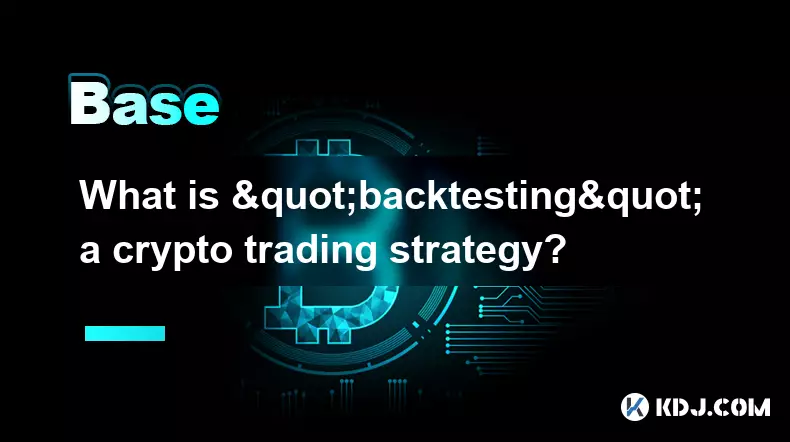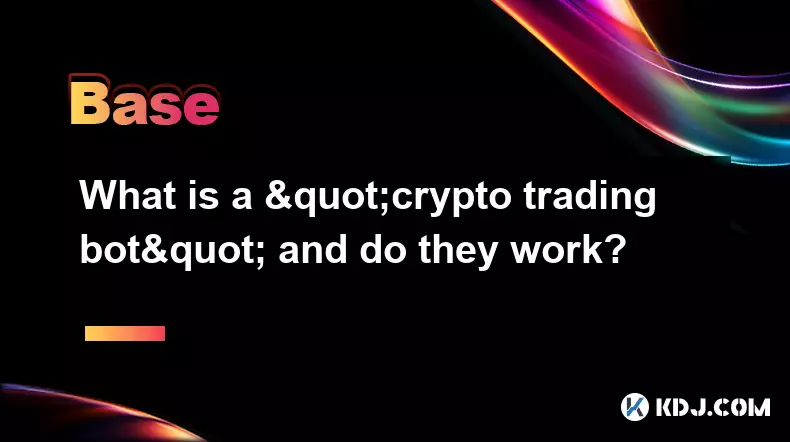-
 Bitcoin
Bitcoin $110000
-1.96% -
 Ethereum
Ethereum $4290
-4.05% -
 Tether USDt
Tether USDt $1.000
0.01% -
 XRP
XRP $2.806
-1.93% -
 BNB
BNB $844.4
-1.88% -
 Solana
Solana $203.5
-3.22% -
 USDC
USDC $0.9999
0.01% -
 Dogecoin
Dogecoin $0.2119
-3.44% -
 TRON
TRON $0.3347
-1.84% -
 Cardano
Cardano $0.8071
-3.99% -
 Chainlink
Chainlink $22.39
-5.73% -
 Hyperliquid
Hyperliquid $45.07
-2.08% -
 Ethena USDe
Ethena USDe $1.001
0.01% -
 Bitcoin Cash
Bitcoin Cash $585.2
-1.91% -
 Sui
Sui $3.250
-3.97% -
 Stellar
Stellar $0.3530
-3.10% -
 Avalanche
Avalanche $24.40
-3.60% -
 Hedera
Hedera $0.2118
-4.15% -
 Cronos
Cronos $0.2643
-4.99% -
 UNUS SED LEO
UNUS SED LEO $9.514
0.10% -
 Litecoin
Litecoin $109.9
-2.51% -
 Toncoin
Toncoin $3.095
-2.26% -
 Shiba Inu
Shiba Inu $0.00001206
-3.89% -
 Polkadot
Polkadot $3.751
-3.35% -
 Uniswap
Uniswap $9.214
-5.03% -
 Dai
Dai $0.9999
-0.01% -
 Monero
Monero $268.5
-0.59% -
 Aave
Aave $308.8
-5.24% -
 Bitget Token
Bitget Token $4.810
-3.43% -
 World Liberty Financial
World Liberty Financial $0.1765
-19.97%
How to earn passive income with crypto
Staking, yield farming, and crypto lending offer passive income opportunities, but each carries unique risks like market volatility, smart contract failures, and platform insolvency.
Jul 13, 2025 at 05:08 pm

Staking Cryptocurrencies for Passive Income
One of the most popular methods to earn passive income with crypto is staking. This involves locking up your cryptocurrency holdings in a wallet or platform to support the operations of a blockchain network. In return, you receive rewards, typically in the form of additional coins. The process works primarily on blockchains that use a Proof-of-Stake (PoS) consensus mechanism, such as Ethereum 2.0, Cardano, and Solana.
To begin staking, choose a supported cryptocurrency and a reliable wallet or exchange that offers staking services. Popular platforms include Binance, Coinbase, and Kraken, which provide user-friendly staking interfaces. Once you've selected your preferred platform, transfer the desired amount of cryptocurrency into the staking pool or wallet. After that, you simply wait while your coins help validate transactions and secure the network, earning you periodic rewards.
It's essential to research the minimum staking requirements, lock-up periods, and potential risks before committing funds. Some networks may penalize users who withdraw their staked assets prematurely through slashing mechanisms. Additionally, always ensure that the platform you're using is reputable and secure to avoid losing funds due to hacks or scams.
Yield Farming: Maximizing Returns Through Liquidity Provision
Yield farming is another method to generate passive income in the crypto space, particularly within decentralized finance (DeFi) protocols. Unlike staking, yield farming often involves providing liquidity to decentralized exchanges (DEXs) like Uniswap or SushiSwap by depositing pairs of tokens into liquidity pools. In exchange for contributing capital, users earn a share of transaction fees generated by the platform.
To participate in yield farming, start by connecting your wallet—such as MetaMask or Trust Wallet—to a DeFi platform. Then, select a liquidity pool that aligns with your risk tolerance and investment goals. For example, stablecoin pairs like USDC/DAI generally carry lower volatility compared to high-risk altcoin combinations.
After selecting a pool, approve the token transfers and deposit the required assets. You'll then receive liquidity provider (LP) tokens representing your share of the pool. These LP tokens can sometimes be used in other DeFi protocols to further compound earnings through compounding strategies or liquidity mining. However, yield farming comes with inherent risks such as impermanent loss, smart contract vulnerabilities, and fluctuating returns, so it's crucial to understand these factors before investing.
Crypto Lending Platforms: Earning Interest on Your Holdings
Crypto lending platforms allow users to earn interest by lending their digital assets to borrowers. This method resembles traditional banking but operates on a decentralized or centralized infrastructure. Centralized platforms like BlockFi, Celsius Network, and Nexo offer competitive interest rates on various cryptocurrencies, including Bitcoin, Ethereum, and stablecoins.
To get started, create an account on a trusted lending platform and complete the necessary verification steps. Once verified, deposit your chosen cryptocurrency into the lending pool or savings account. The platform will then lend your assets to institutional or retail borrowers, paying you interest at regular intervals—daily, weekly, or monthly depending on the service.
Interest rates vary based on market demand and supply dynamics. Stablecoins like USDT and USDC typically offer higher yields compared to volatile assets like Bitcoin. However, there are risks involved, such as counterparty risk if the platform faces insolvency or regulatory scrutiny. Always review the platform’s security measures, insurance policies, and historical performance before depositing funds.
Masternodes: Running a Node for Consistent Rewards
Running a masternode is another advanced method to earn passive income in the crypto ecosystem. A masternode is a full node on a blockchain network that performs specific functions beyond transaction validation, such as enabling private transactions, instant transfers, or participating in governance decisions. In return for maintaining the network, masternode operators receive a portion of the block rewards.
To set up a masternode, you must first acquire a specific amount of the native cryptocurrency—often ranging from hundreds to thousands of coins—as collateral. Examples include Dash, PIVX, and Zcoin, each requiring different amounts of locked-up assets.
Next, you’ll need a dedicated server or VPS (Virtual Private Server), a static IP address, and technical knowledge to configure the node software properly. While some platforms offer managed masternode services, running your own provides greater control and potentially higher rewards.
Masternodes require ongoing maintenance and monitoring to ensure uptime and network stability. Failure to maintain the node correctly could result in missed rewards or penalties. Due to the high entry barrier and technical complexity, this method is best suited for experienced investors with sufficient capital and technical expertise.
Dividend-Bearing Tokens: Receiving Regular Payouts
Certain cryptocurrencies are designed to distribute a portion of their revenue or transaction fees directly to token holders. These dividend-bearing tokens operate similarly to stocks that pay dividends, offering a consistent stream of passive income without the need for active participation.
Projects like BNB (Binance Coin), KuCoin Shares (KCS), and FTX Token (FTT) periodically distribute profits or fee rebates to token holders. To benefit from these distributions, simply hold the respective tokens in a compatible wallet or on the issuing exchange during the snapshot period when payouts are calculated.
The frequency and amount of dividends depend on the platform’s performance and the number of tokens you hold. Holding larger quantities increases your share of the rewards. However, dividend payments are not guaranteed and may fluctuate based on business conditions or market volatility.
Before investing in dividend-bearing tokens, evaluate the underlying project’s financial health, transparency, and long-term viability. Since these tokens are often tied to centralized platforms, they may face regulatory challenges or changes in payout policies.
Frequently Asked Questions
What is the safest way to earn passive income with crypto?Staking on well-established Proof-of-Stake blockchains like Ethereum or using reputable centralized lending platforms with strong security measures tends to be safer than high-risk strategies like yield farming.
Can I lose money while earning passive income through crypto?Yes, depending on the method. Risks include market volatility, impermanent loss in DeFi, platform insolvency in lending, and technical failures in masternodes.
Do I need a large amount of crypto to start earning passive income?Not necessarily. Many platforms allow users to stake or lend small amounts of crypto. However, larger investments typically yield higher absolute returns.
Are there tax implications for earning passive income with crypto?Yes, most jurisdictions consider crypto earnings as taxable income. It’s important to keep accurate records and consult a tax professional familiar with cryptocurrency regulations.
Disclaimer:info@kdj.com
The information provided is not trading advice. kdj.com does not assume any responsibility for any investments made based on the information provided in this article. Cryptocurrencies are highly volatile and it is highly recommended that you invest with caution after thorough research!
If you believe that the content used on this website infringes your copyright, please contact us immediately (info@kdj.com) and we will delete it promptly.
- Arctic Pablo Coin, Pudgy Penguins, Mog Coin, and Avalanche: Navigating the Meme Coin Mania in NYC
- 2025-09-05 02:45:17
- Bitcoin Buying Spree: Whales, Unlocks, and Market Impact - What's Next?
- 2025-09-05 02:25:15
- BlockchainFX: Your Ticket to Crypto Investment and Passive Income Nirvana
- 2025-09-05 03:05:12
- Cryptos to Explode in Late 2025: Meme Coins, DeFi, and More!
- 2025-09-05 03:45:14
- Ripple's RLUSD Stablecoin Expands into Africa: A Game Changer?
- 2025-09-05 02:45:17
- Central Banks, Stablecoins, and Regulation: Navigating the New Financial Frontier
- 2025-09-05 03:45:14
Related knowledge

What is "backtesting" a crypto trading strategy?
Sep 03,2025 at 10:55am
Understanding Backtesting in Crypto TradingBacktesting is the process of evaluating a trading strategy by applying it to historical market data. Trade...

What is a "crypto trading bot" and do they work?
Sep 02,2025 at 04:19pm
Understanding Crypto Trading Bots1. A crypto trading bot is a software application designed to automate the process of buying and selling cryptocurren...

What is a "copy trading" platform?
Sep 02,2025 at 07:00pm
Understanding Copy Trading in the Cryptocurrency Space1. A copy trading platform allows users to automatically replicate the trades of experienced inv...

What is "social trading" for crypto?
Sep 03,2025 at 09:00pm
Understanding Social Trading in the Cryptocurrency Space1. Social trading refers to a method where investors observe, follow, and automatically replic...

What is a "crypto basket" or index?
Sep 03,2025 at 07:01am
Understanding Crypto Baskets and Their Role in Digital Asset Investment1. A crypto basket refers to a curated collection of multiple cryptocurrencies ...

What are "impermanent loss" calculators?
Sep 03,2025 at 12:00pm
Understanding Impermanent Loss in Decentralized Finance1. Impermanent loss is a phenomenon that affects liquidity providers in decentralized exchanges...

What is "backtesting" a crypto trading strategy?
Sep 03,2025 at 10:55am
Understanding Backtesting in Crypto TradingBacktesting is the process of evaluating a trading strategy by applying it to historical market data. Trade...

What is a "crypto trading bot" and do they work?
Sep 02,2025 at 04:19pm
Understanding Crypto Trading Bots1. A crypto trading bot is a software application designed to automate the process of buying and selling cryptocurren...

What is a "copy trading" platform?
Sep 02,2025 at 07:00pm
Understanding Copy Trading in the Cryptocurrency Space1. A copy trading platform allows users to automatically replicate the trades of experienced inv...

What is "social trading" for crypto?
Sep 03,2025 at 09:00pm
Understanding Social Trading in the Cryptocurrency Space1. Social trading refers to a method where investors observe, follow, and automatically replic...

What is a "crypto basket" or index?
Sep 03,2025 at 07:01am
Understanding Crypto Baskets and Their Role in Digital Asset Investment1. A crypto basket refers to a curated collection of multiple cryptocurrencies ...

What are "impermanent loss" calculators?
Sep 03,2025 at 12:00pm
Understanding Impermanent Loss in Decentralized Finance1. Impermanent loss is a phenomenon that affects liquidity providers in decentralized exchanges...
See all articles

























































































